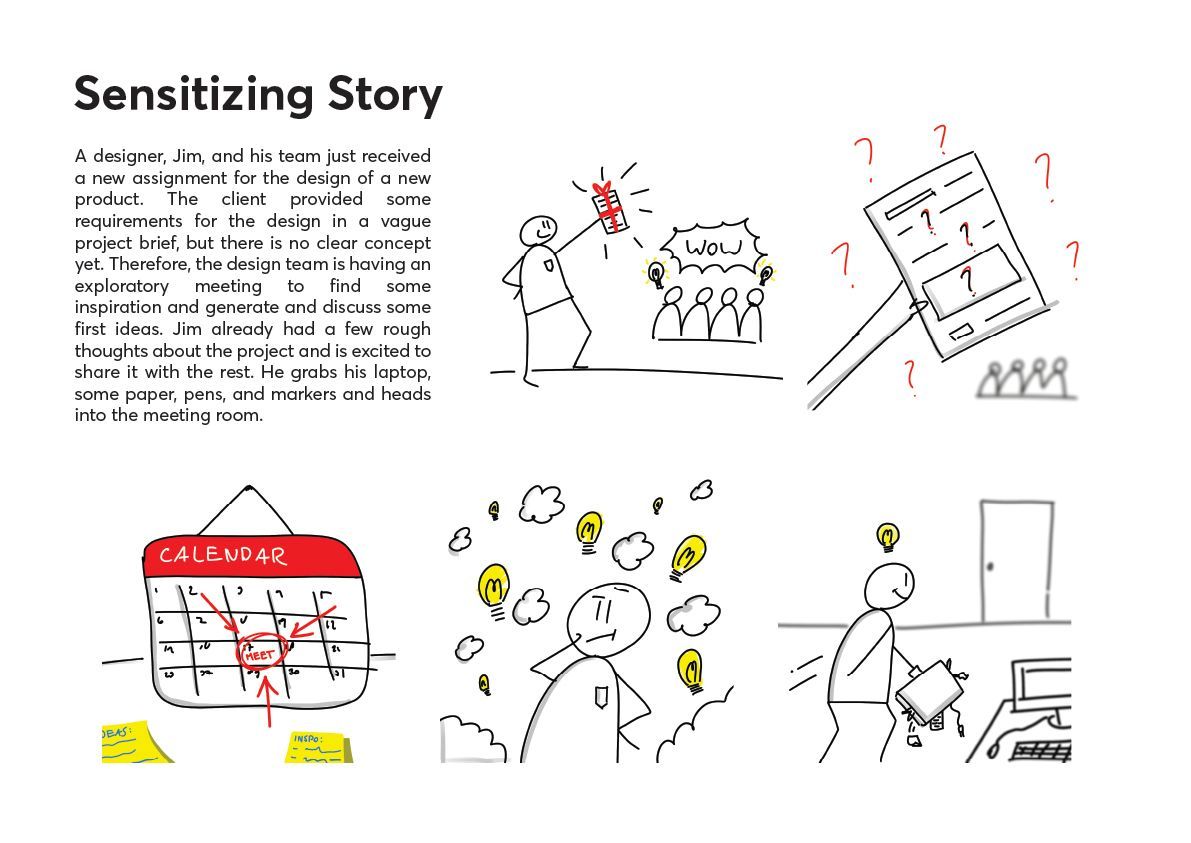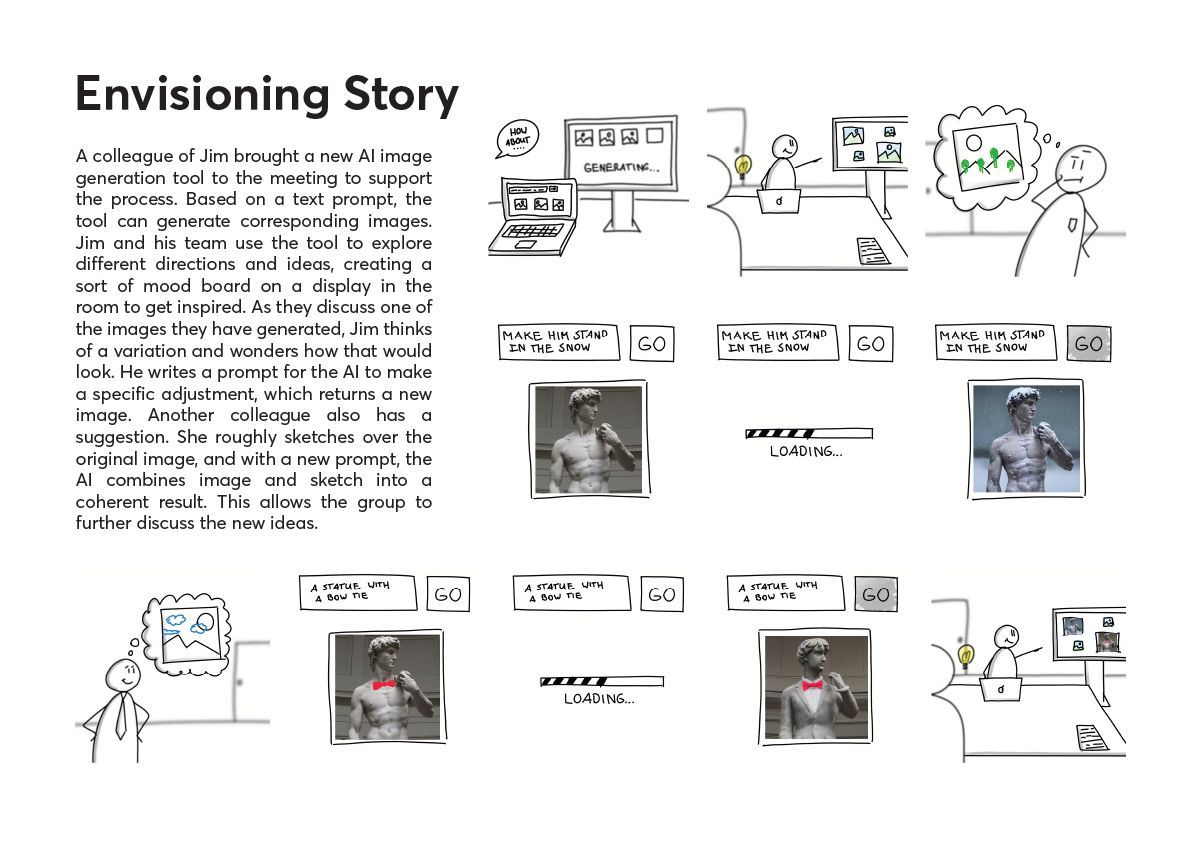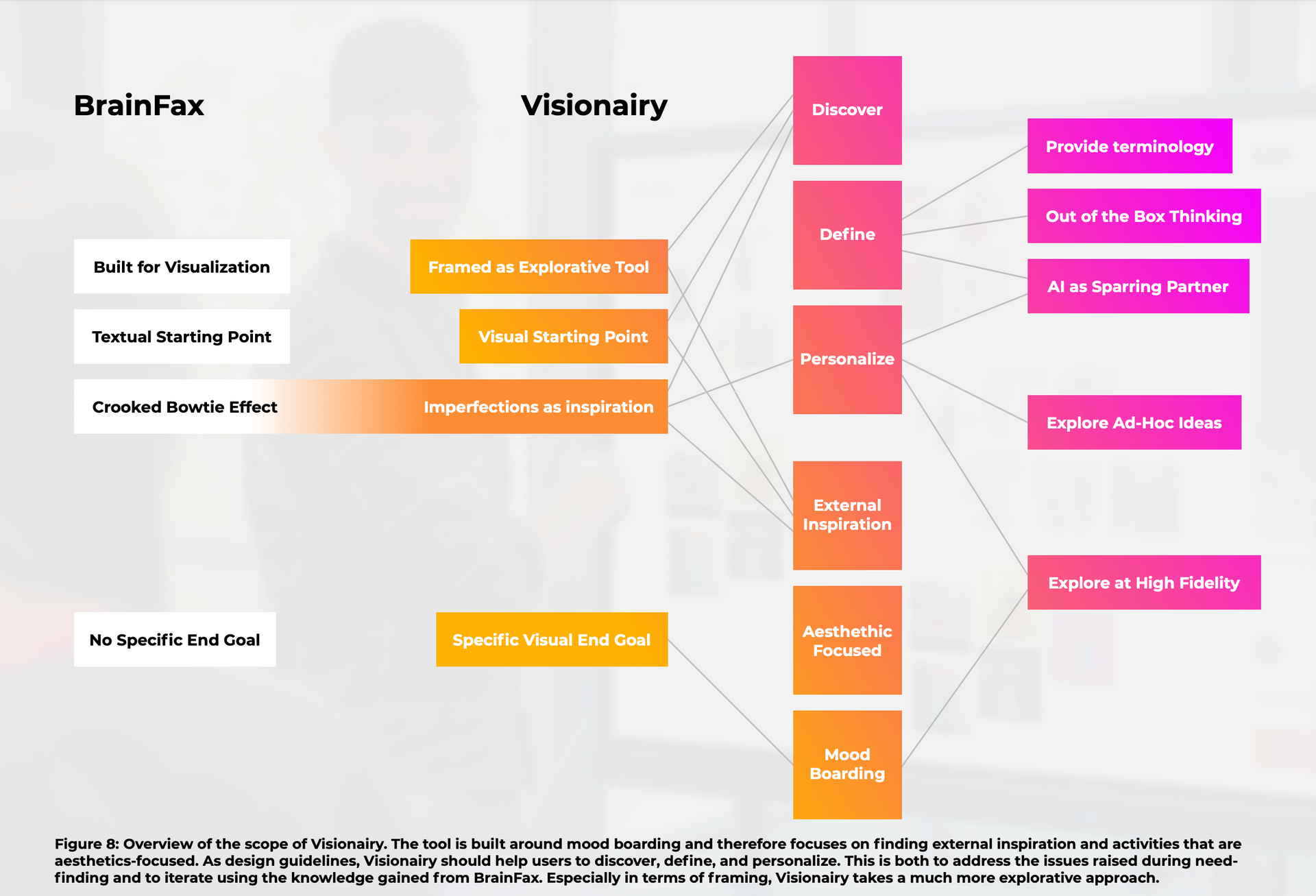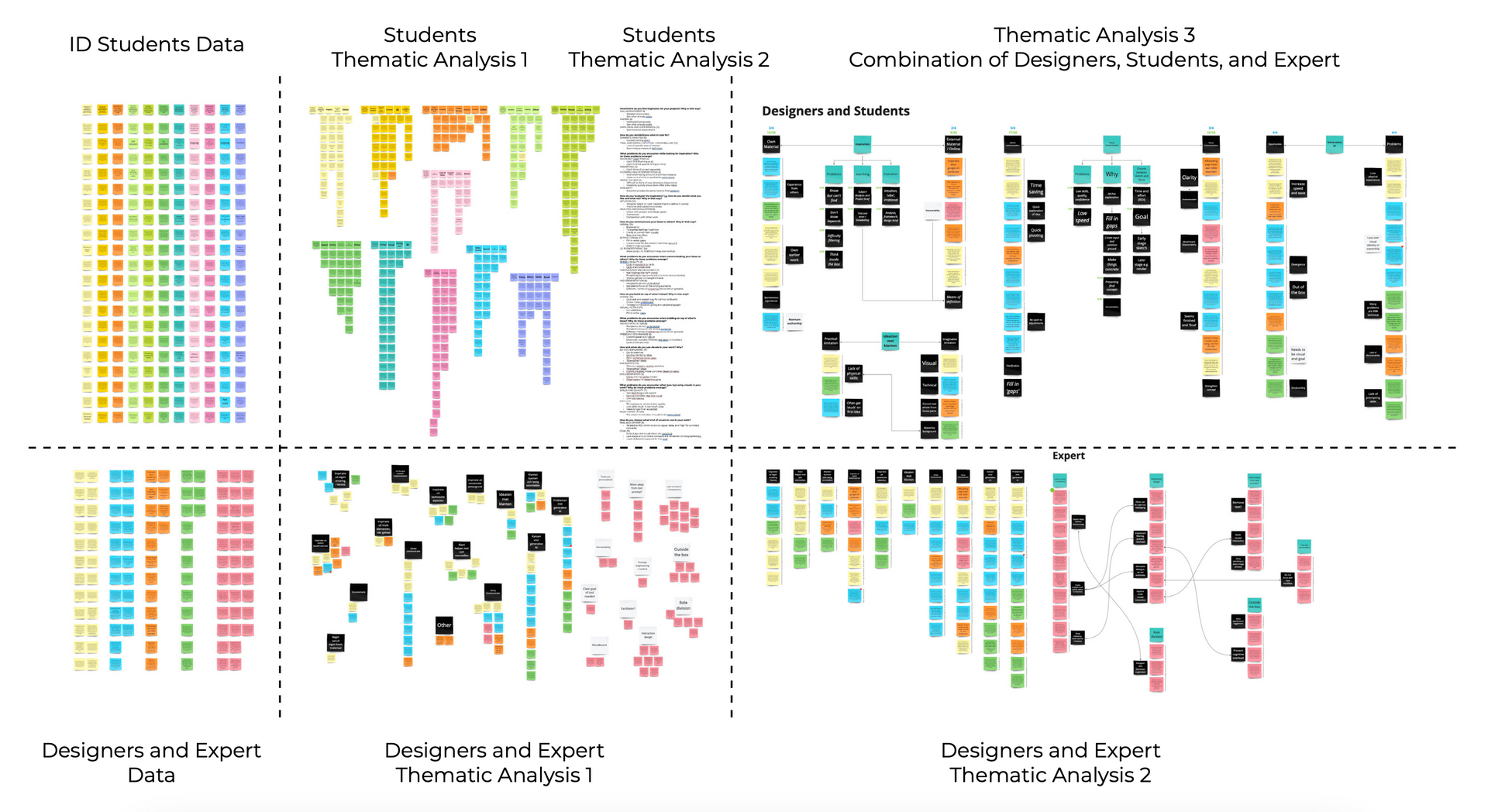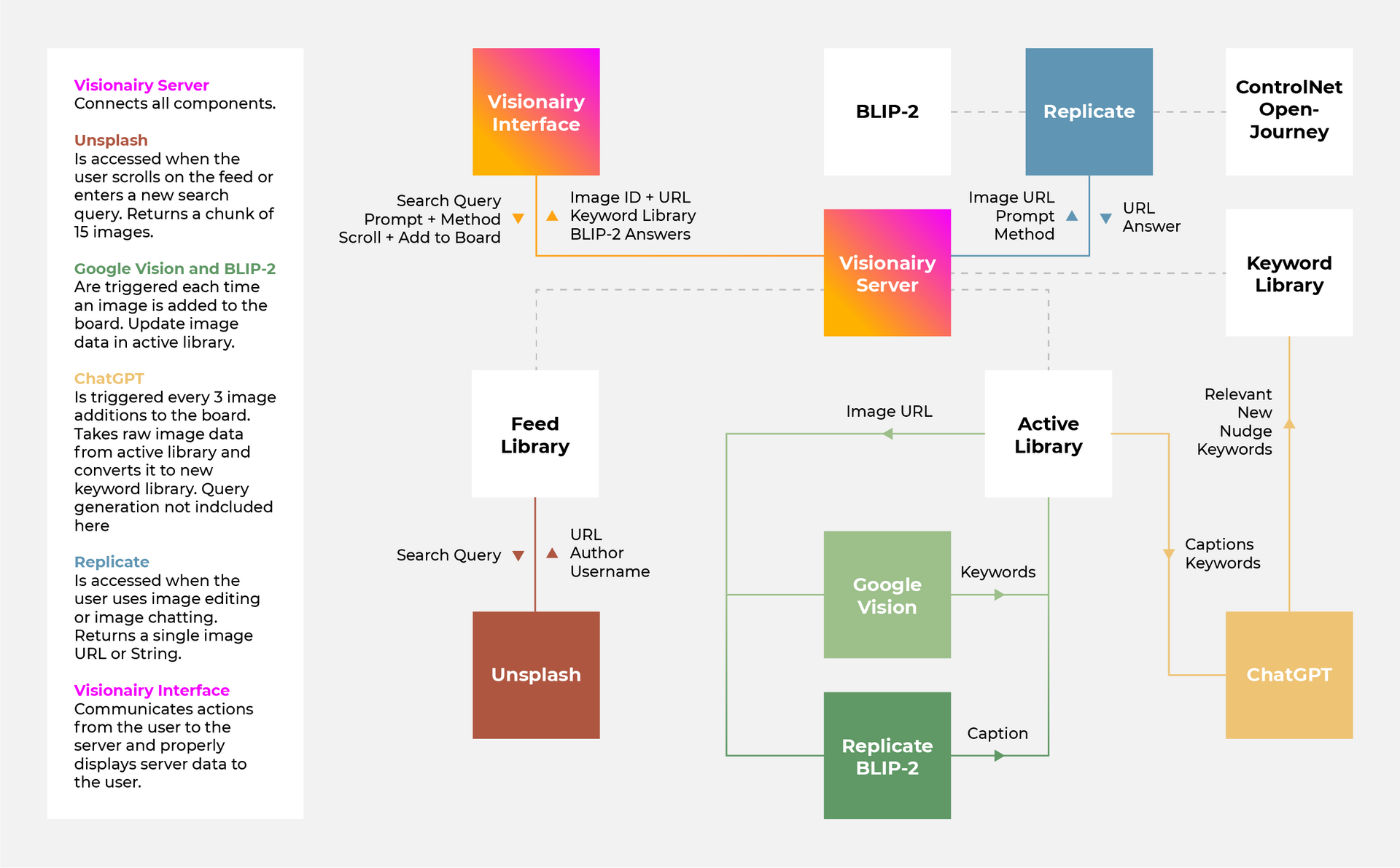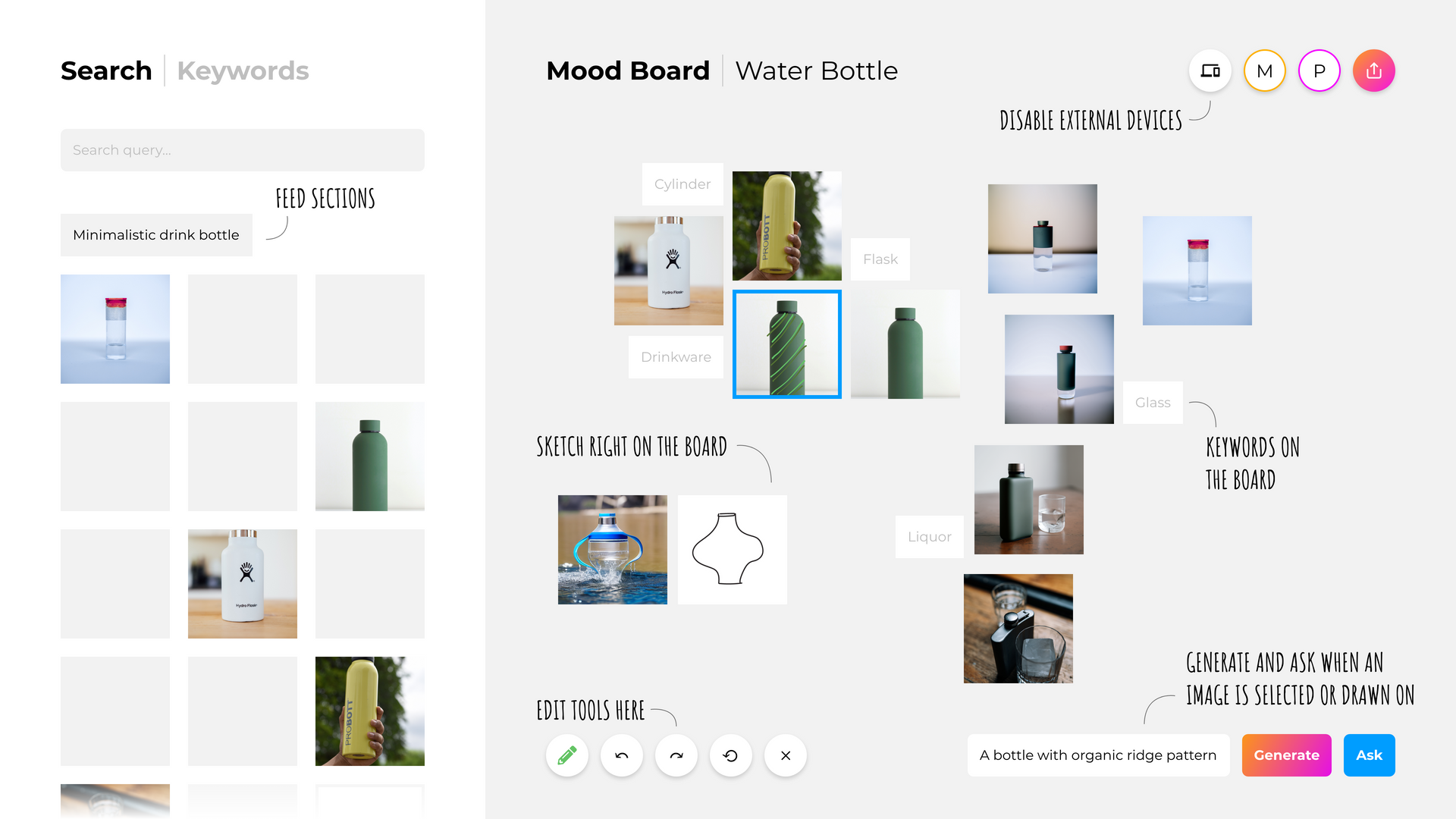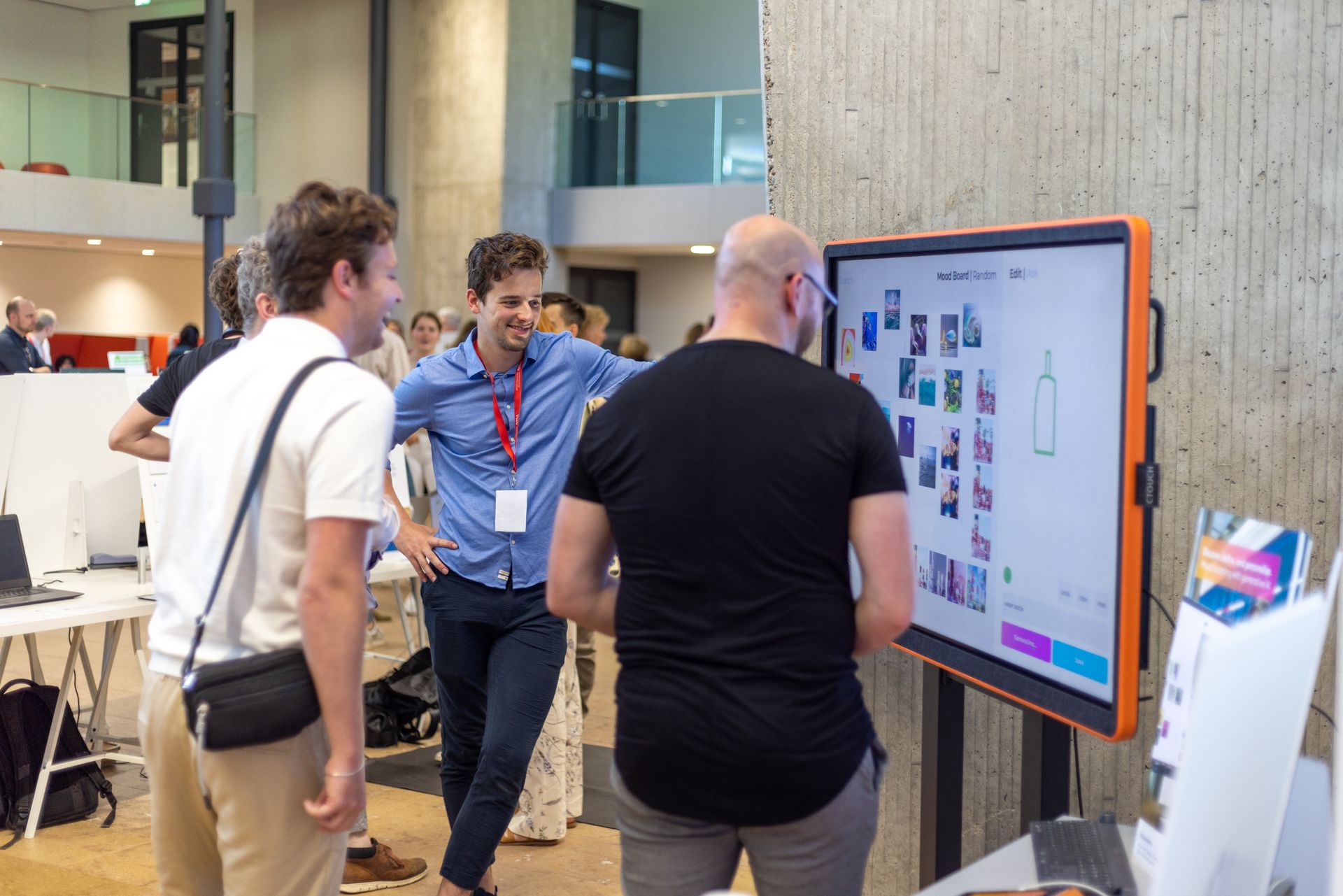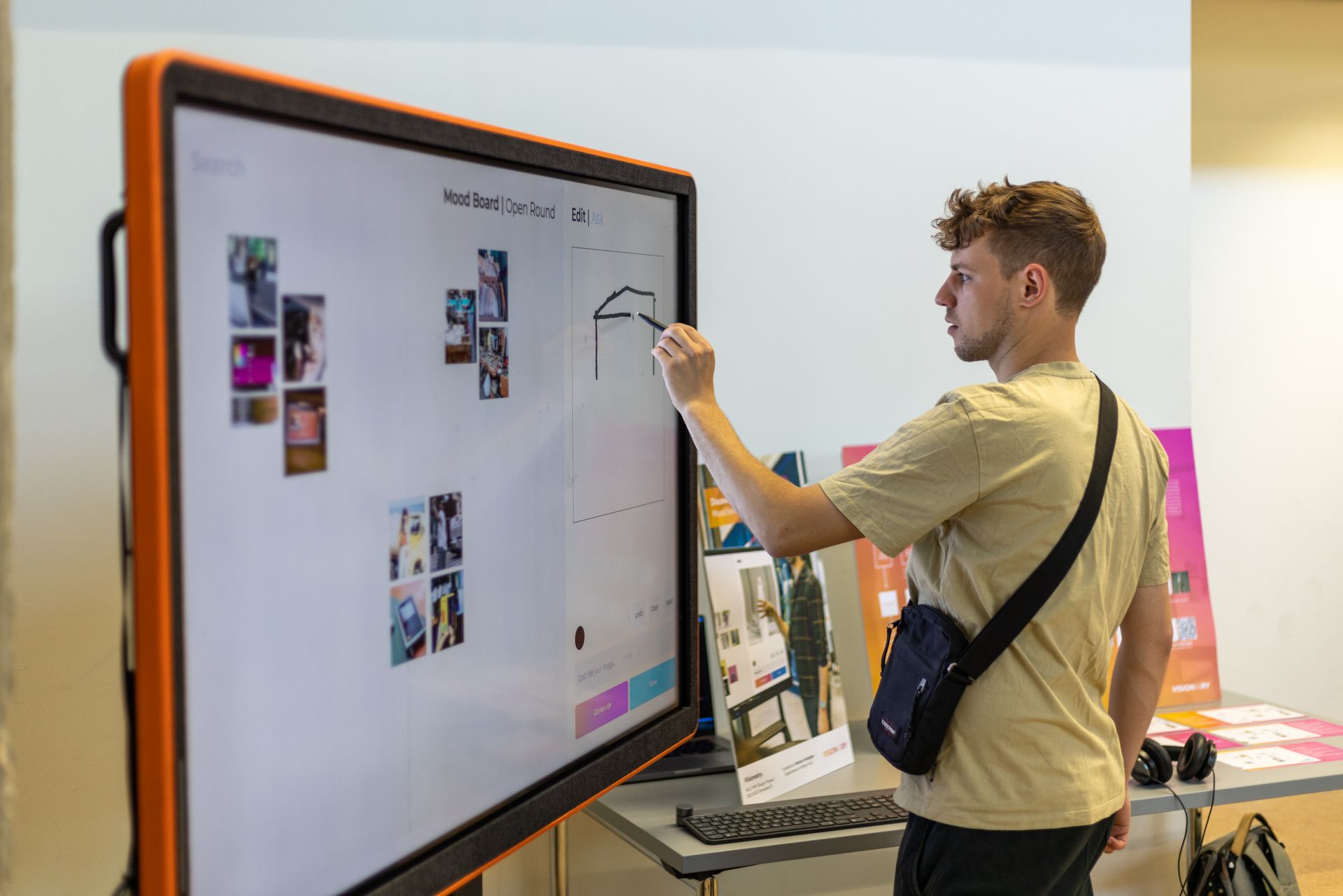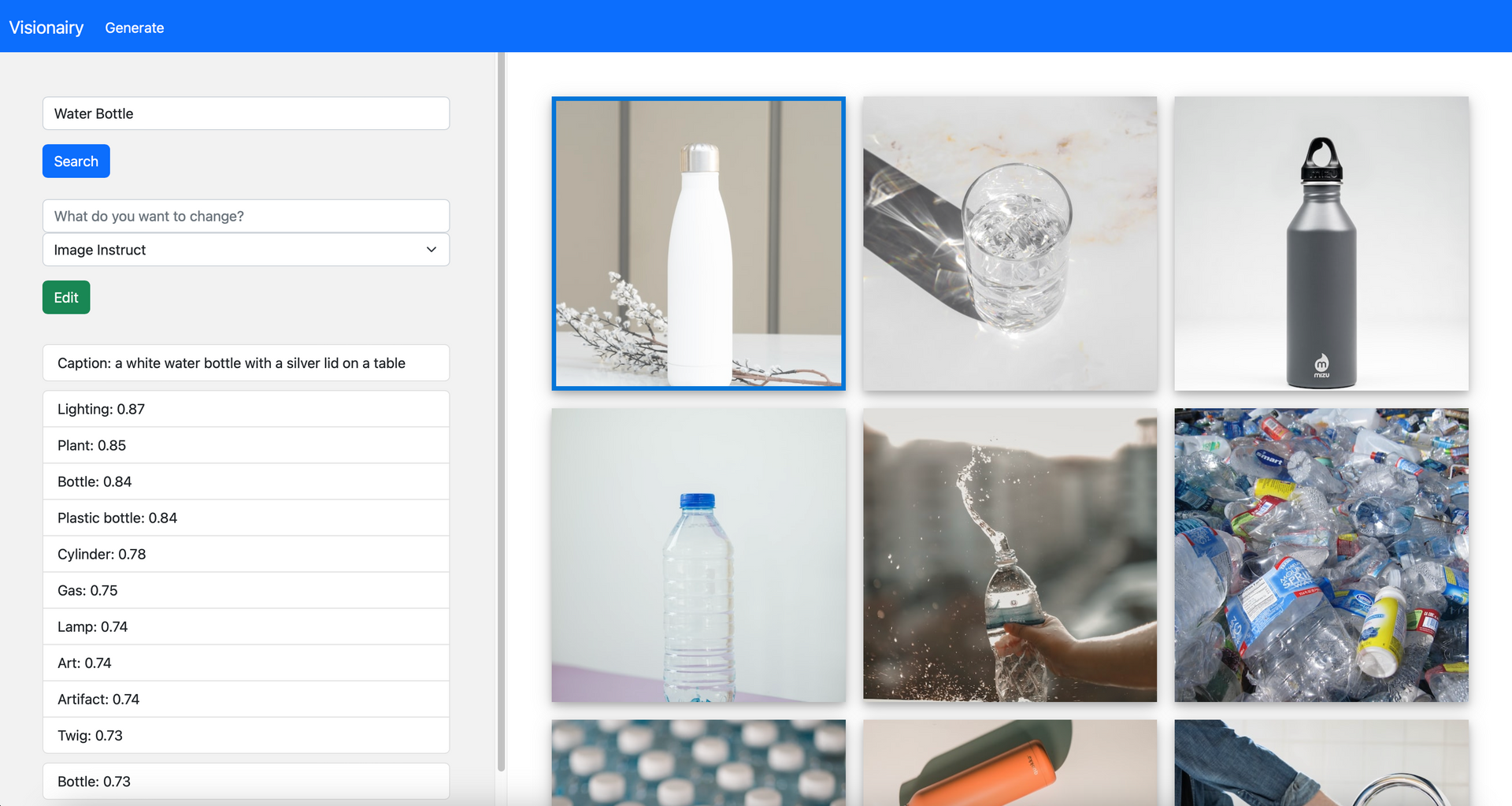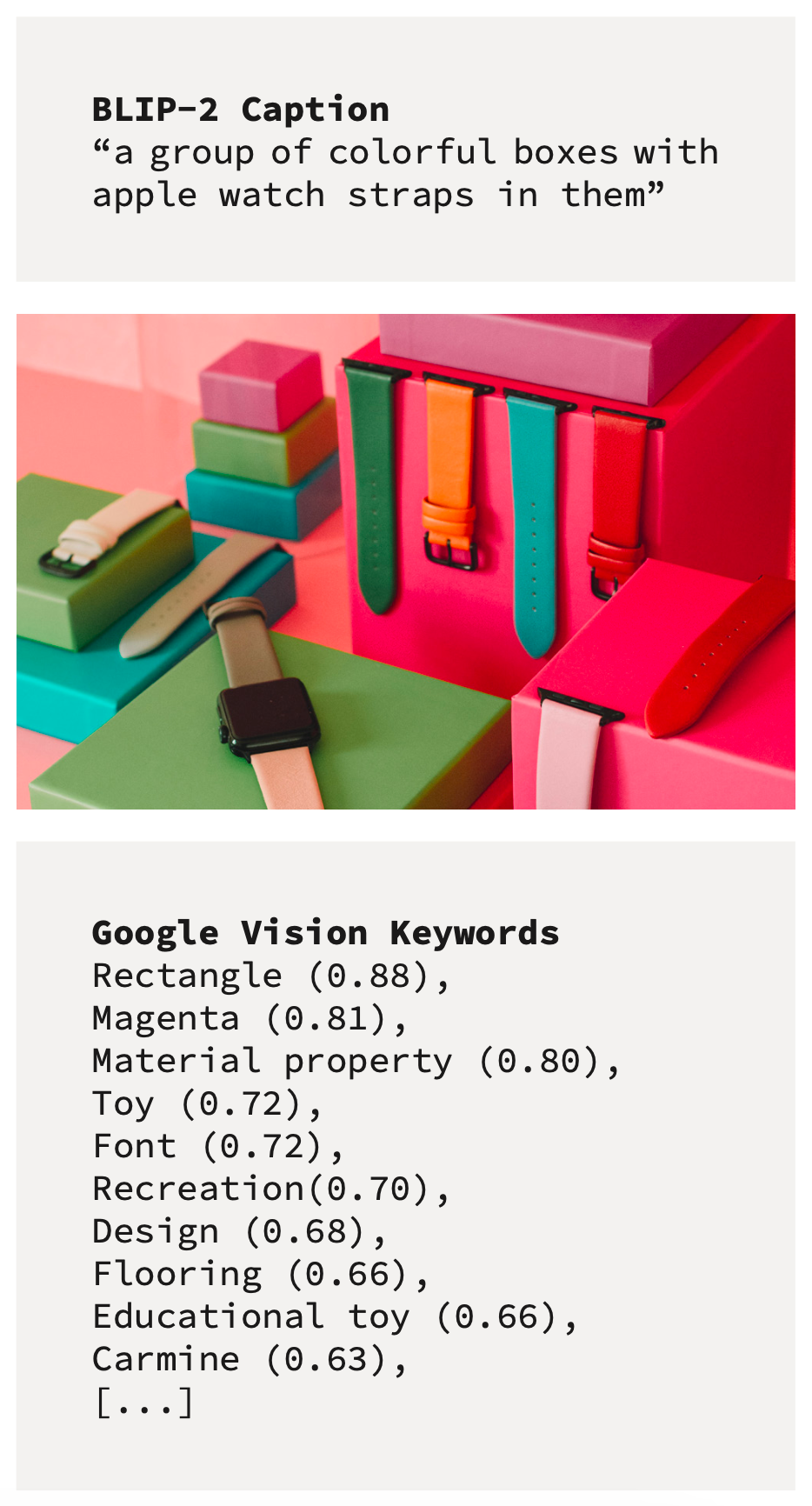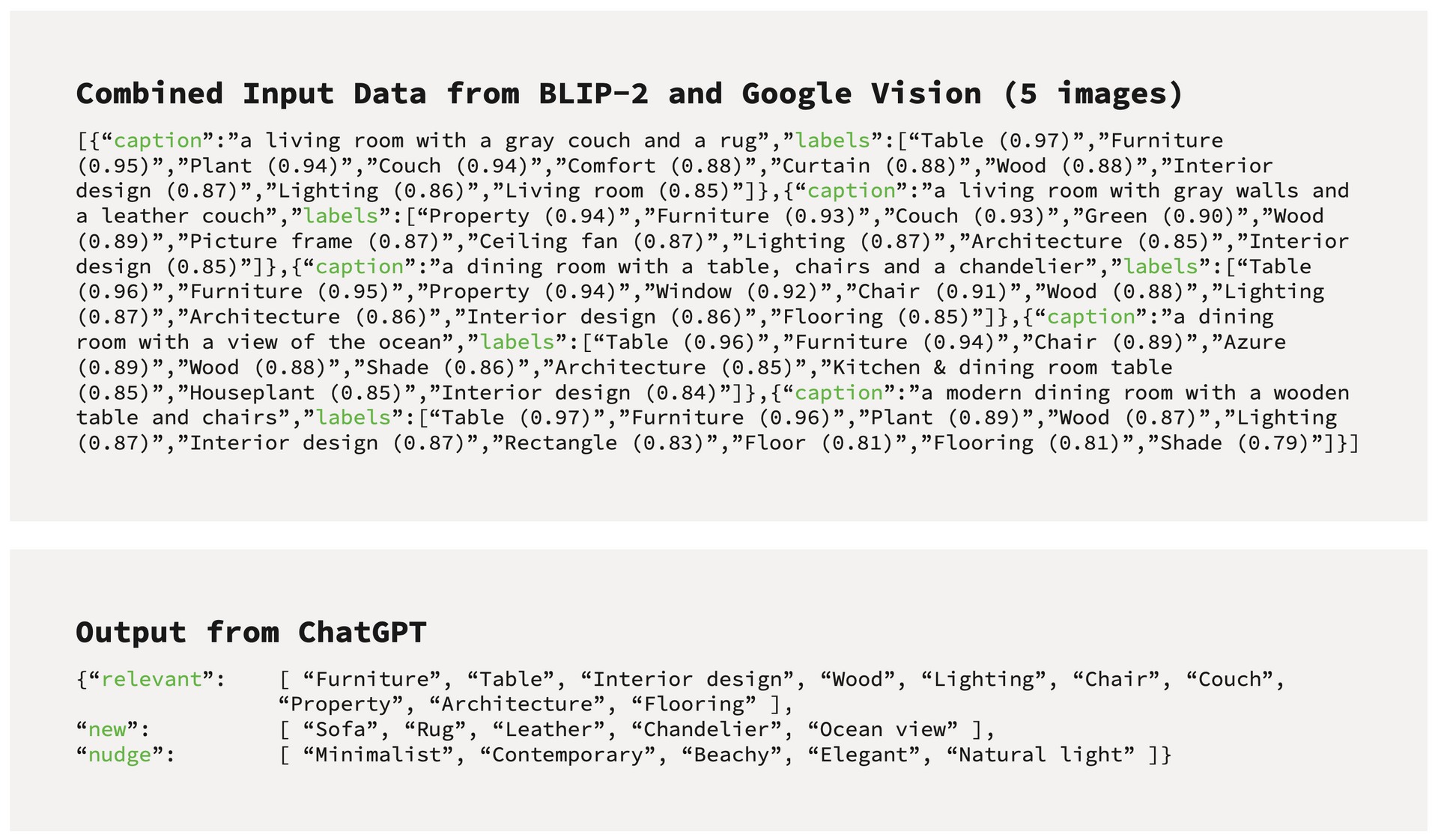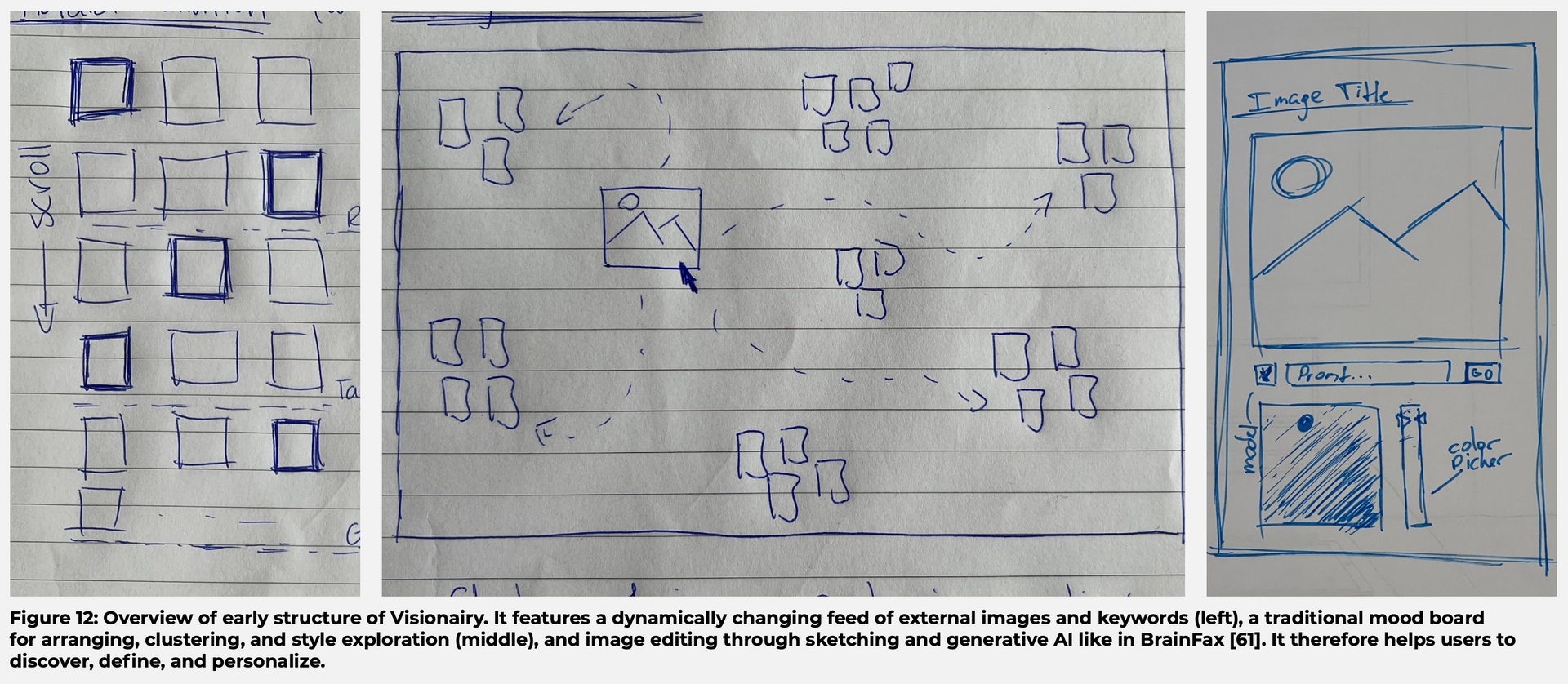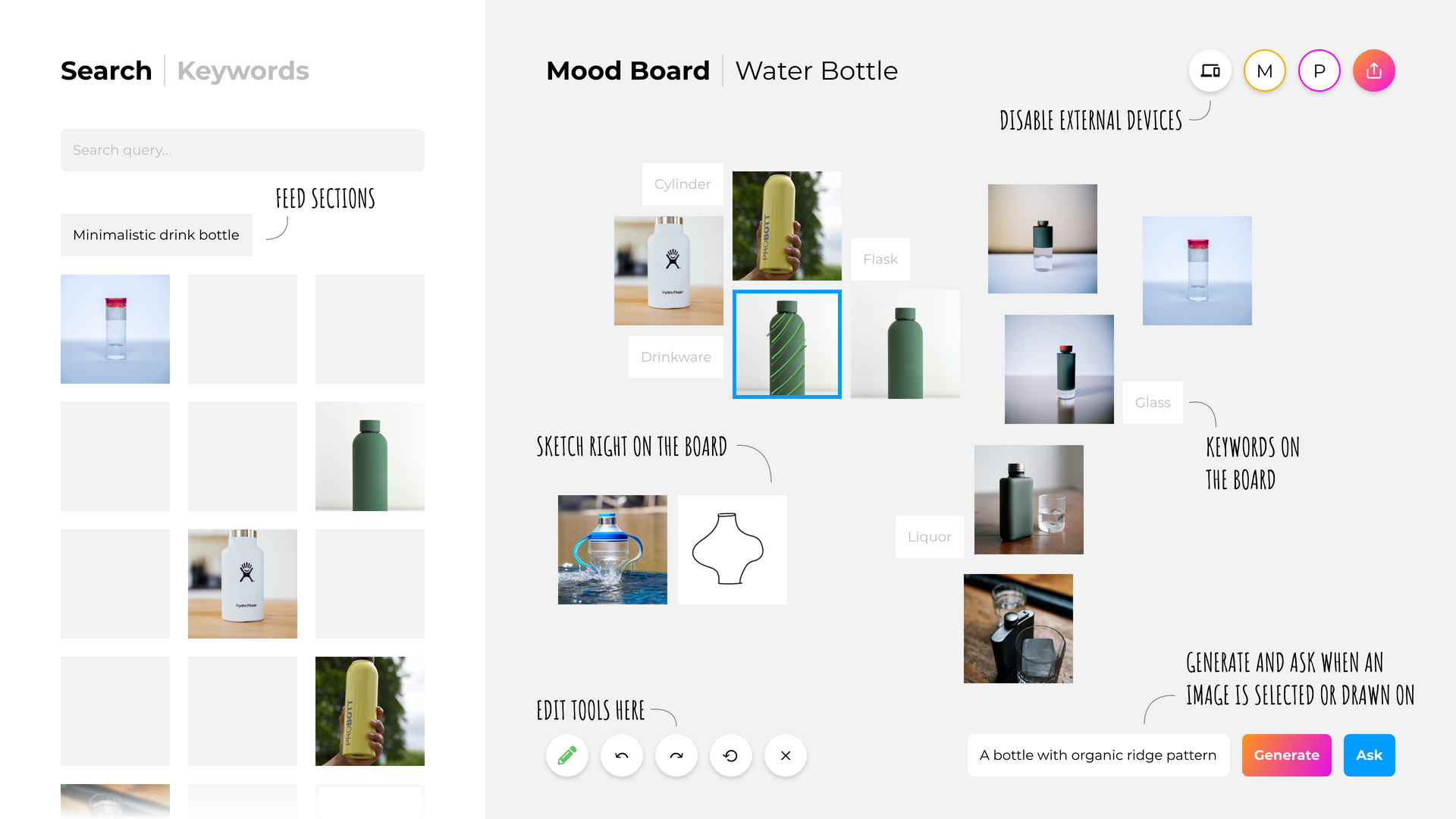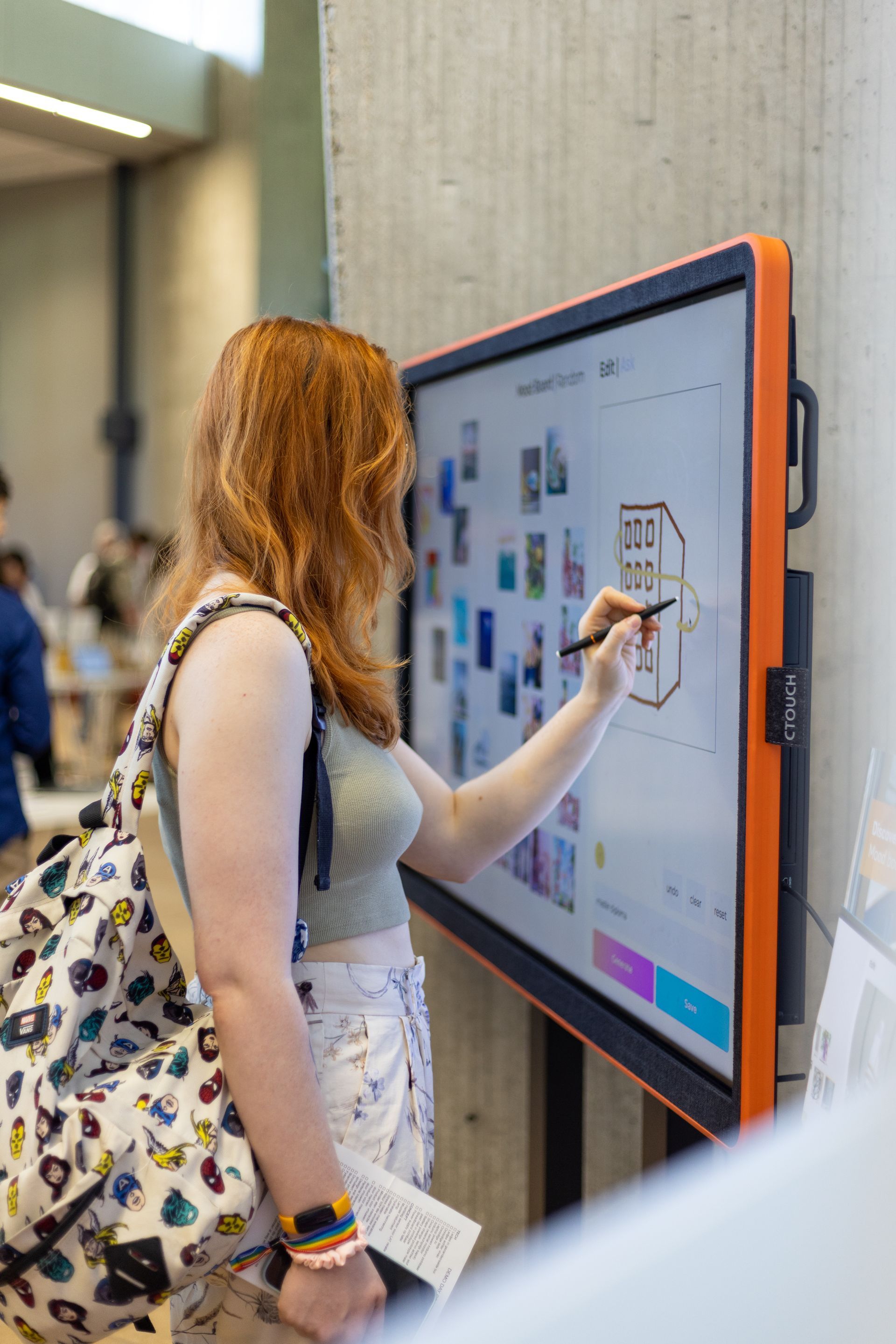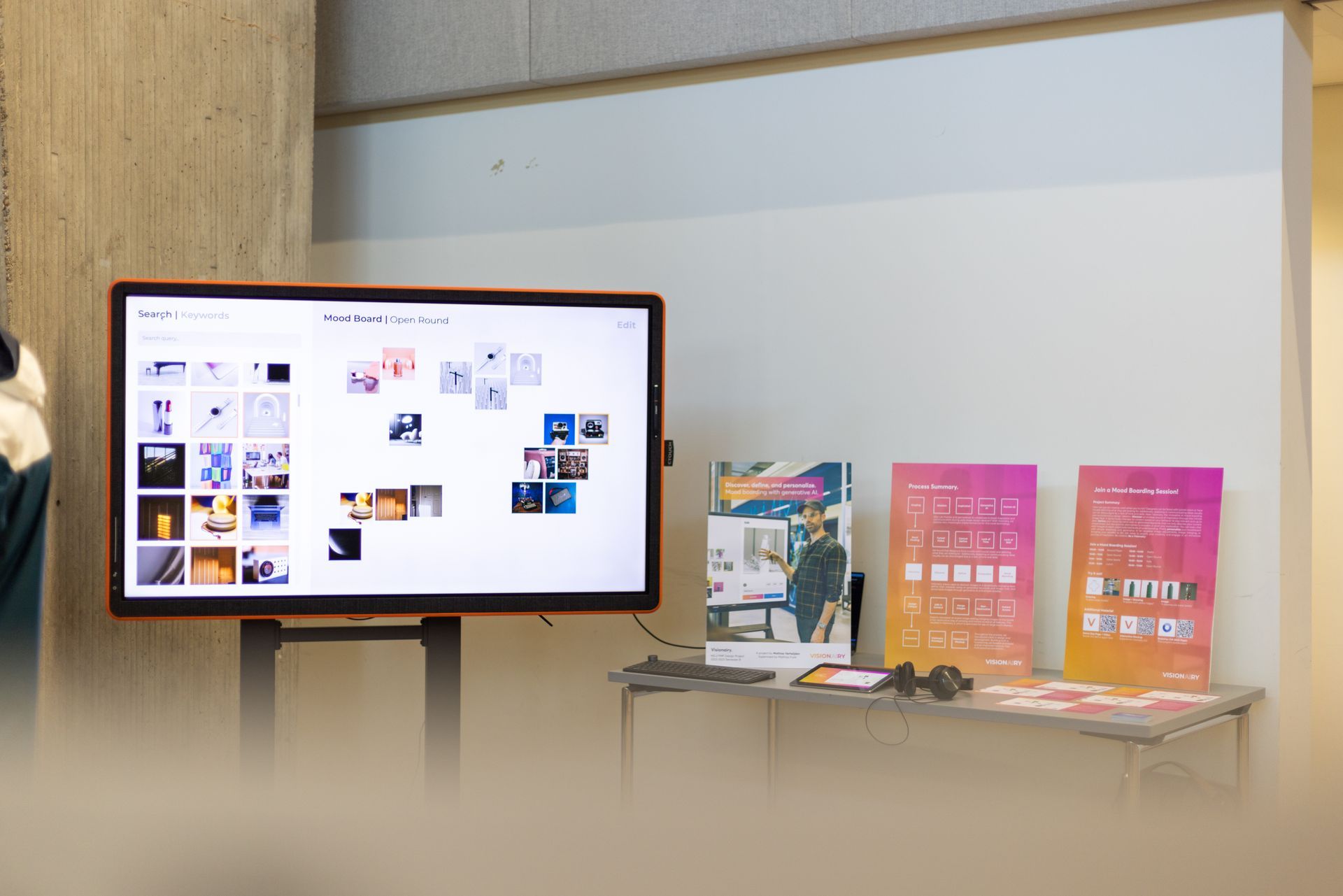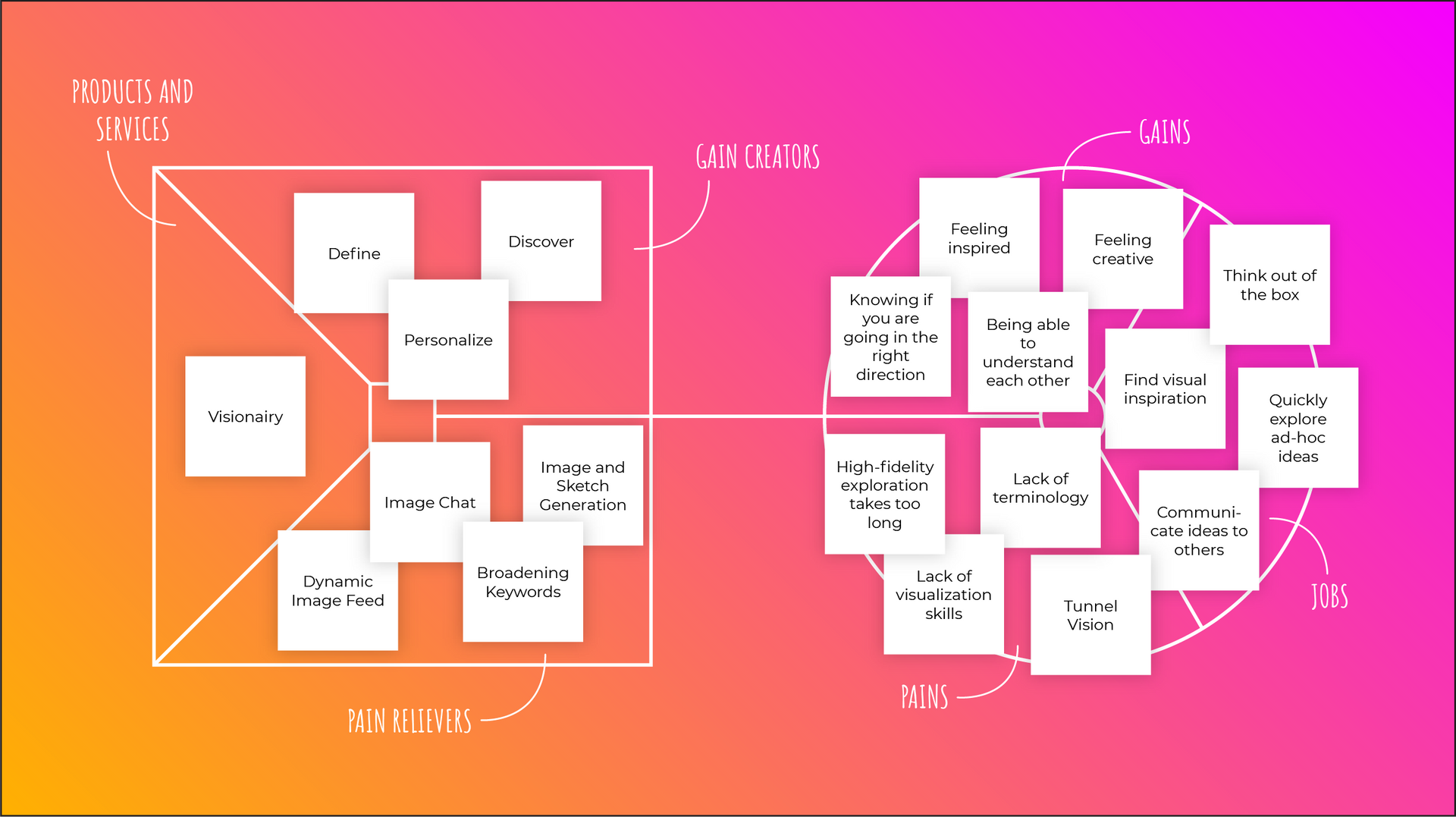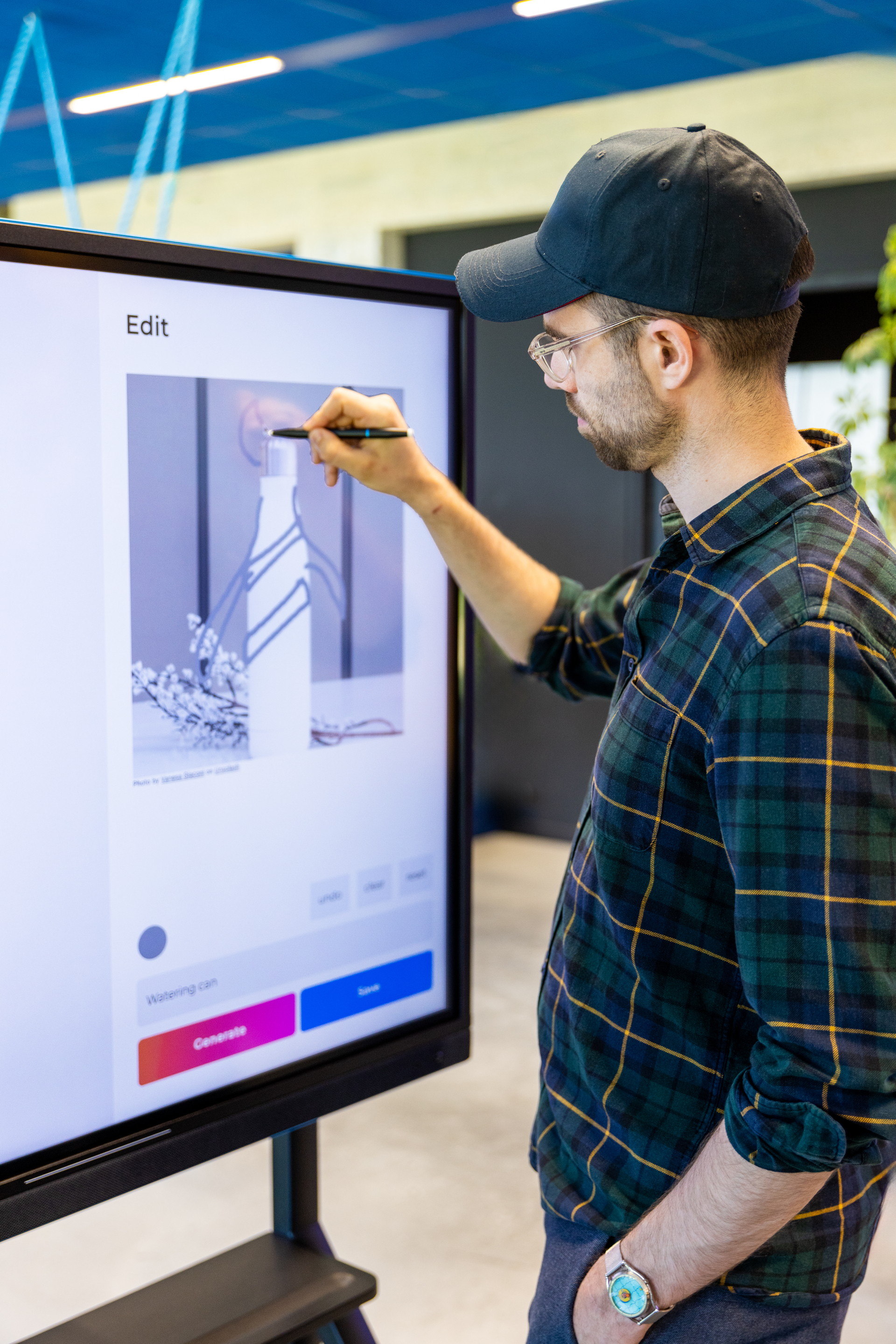This page is part of my graduation portfolio for the Master Industrial Design at Eindhoven University of Technology.
Project Overview
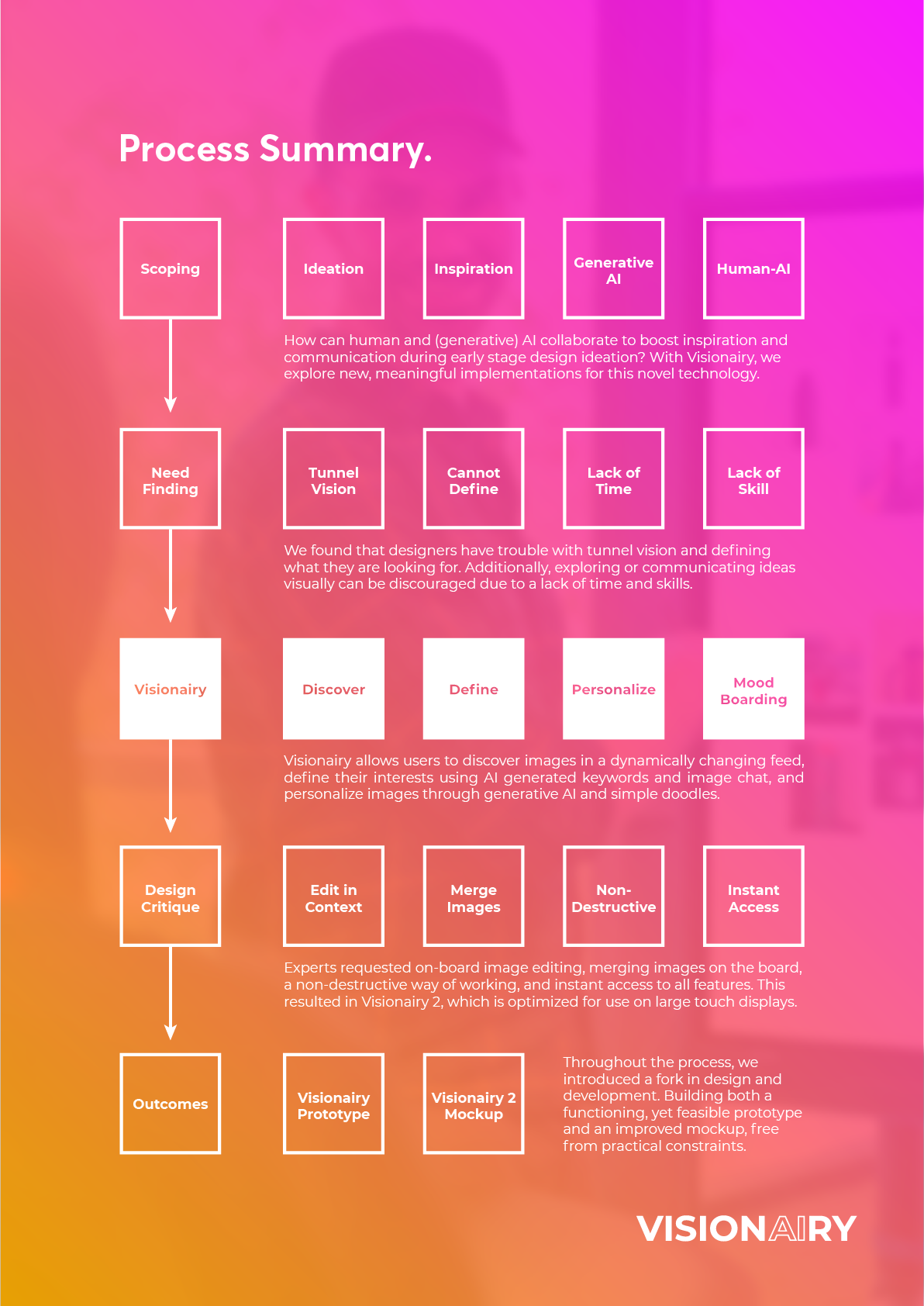
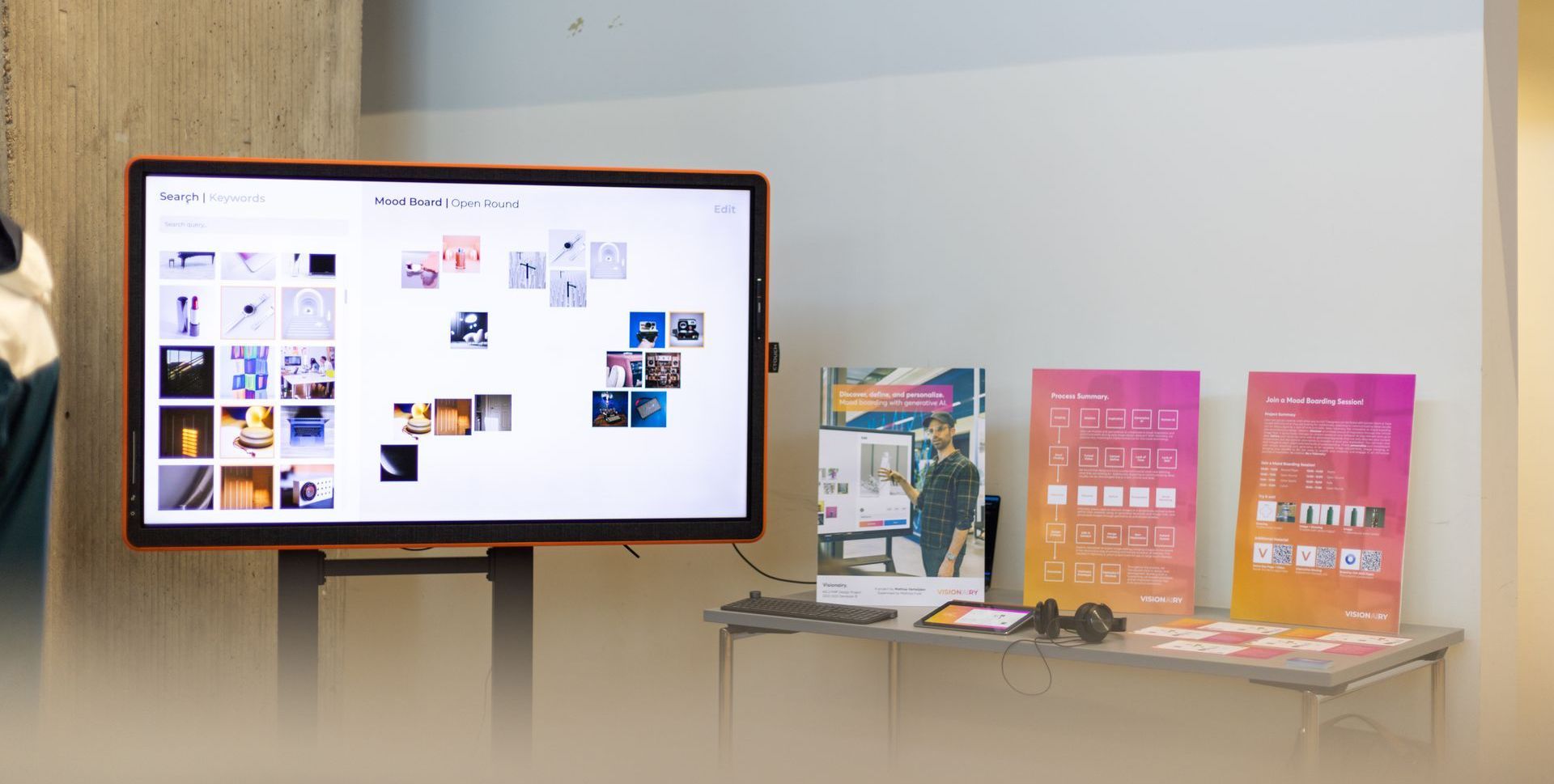
User and Society
In line with my identity and vision, this project took a very user-centered approach, focusing on early need-finding and making participants an integrated part of the design process. I carefully selected participants from various contexts, both in and outside the department to gather multiple perspectives.
Using my prior knowledge and skills, as well as new methods such as Co-Constructing Stories [1] and design critique, I could extract and define relevant problems and needs for a thorough understanding. Together with related work, I translated this into a project scope, focused on providing specific and carefully selected values.
Finally, I showed awareness of the societal impact of generative AI, which I used in conjunction with the reactions to my earlier publication to improve the design work's framing appropriately. Therefore, I was able to address not only my target users' needs but also societal concerns and provide an alternative direction for future development.
[1] Ozcelik Buskermolen, D., & Terken, J. M. B. (2012). Co-constructing stories. In PDC ’12 Proceedings of the 12th Participatory Design Conference : exploratory papers, workshop descriptions, industry cases (Vol. 2). https://doi.org/10.1145/2348144.2348156
Technology and Realization
Besides learning new digital development skills, I matured and professionalized my approach to realization. By collaborating with Bureau Moeilijke Dingen for front-end development, I could focus on implementing the required back-end system to realize the user experience, bringing the demonstrator to the next level. The collaboration went very smoothly by working with clearly annotated code, instructions, and system overviews.
Although my system uses five different AI models and a custom data architecture, the experience feels intricate and coherent, despite the substantial complexity of many parts behind the scenes. I am particularly proud of this, but it was also recognized externally as Visionairy was selected to be exposed at the 2023 Dutch Design Week.
Judging from this project, my approach to realization is no longer just functional, but also integrates aspects like future expansion possibilities or cost. Because of this project, I now consider a broader perspective and can produce implementations that
keep up with professional production environments.
Math, Data, and Computing
As mentioned above, Visionairy makes use of five different AI models. Yet, the design feels very intricate and coherent throughout the interaction. This is because I understand the strengths, weaknesses, and aesthetics of each of these tools very well, allowing me to use them as design materials that construct the user experience by intelligently complementing each other.
I designed an exponential decay system as a proof of concept for analyzing the user’s behavior. Although rudimentary compared to algorithms from e.g. large social media companies, my mathematical skillset allowed me to construct and realize the envisioned experience in a convincing and experiential way.
Finally, generative AI blurs the borders of authorship and copyright, requiring designers to make additional ethical and moral considerations when using this technology. Therefore, the aesthetics of these models go beyond the interaction itself but also concern a larger societal debate. Therefore, I learned to remain critical and approach new technologies holistically.
Creativity and Aesthetics
Throughout the design process, I carefully switched between the first-, second-, and third-person perspectives, allowing me to balance knowledge and intuition. Next to engaging with users, academic experts, and related work, I therefore used my vision to make intuitive yet coherent design decisions.
This resulted in a carefully crafted design in which qualities of form, function, and interaction were brought together equally. Through multiple iterations, in-between reflections, and design critiques, a balanced design was created using my UI/UX design experience. This resulted in highly advanced functionality through simple and intuitive interactions, embodied in a simplistic yet pleasing aesthetic.
Finally, I decoupled design and prototype, using my video production and storytelling skills to express the final iteration in a visual and lively way, and developing a brand identity along the process. The design and concept represent a transformative way of interacting with these technologies, also recognized externally (here).
Business and Entrepreneurship
From the start, I envisioned Visionairy (pun intended) to become a real product. Therefore, I strategically involved industry in my design process to increase the level of awareness and relevancy of Visionairy.
For development, I partnered with Bureau Moeilijke Dingen, allowing me to create a convincing MVP within the project's timeframe. For the design critiques, I also contacted CTOUCH, a large touch display manufacturer that is increasingly shifting its value proposition to creative and collaborative software on these displays. These were good decisions, as both BMD and CTOUCH have expressed interest in releasing or (partly) integrating Visionairy.
In this process, I relied on my business knowledge to focus on the right elements for convincing external parties; a strong value proposition and minimum viable product. Additionally, I constructed initial business approaches for a public release or internal use of Visionairy. Therefore, this project indicates that I can combine my knowledge and skills from Focality with the design context of the department.
References
Some (parts) of images, e.g. images in mockups or storyboards, on this page were sourced externally or AI generated. You can find a reference list including thumbnails of these images through the button below or in my FMP report.
Appendix - Testimonials
Marijn van der Steen - Bureau Moeilijke Dingen
"The tool that Mathias has designed [...] adds value to already existing models by focusing on a User Experience design that enhances the capabilities of generative AI tools. The design is elegant and intuitive, making sure that it doesn’t feel too techy and instead becomes part of the creative process of the user."
Rhys Duindam - CTOUCH
"The proposal Mathias makes for a brainstorm supporting tool during the ideation process is simple and elegant. It let's AI fall into the background and therefore extends beyond the industry catchphrase and becomes genuinely useful and intriguing for users. The prototype is of an exceptional quality level and is indistinguishable from a startup's first release product."
Please find the full testimonials in my FMP report.

